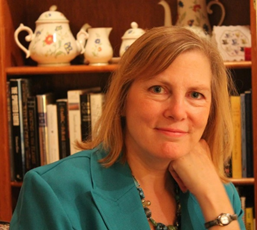When a heavy object falls on one’s foot, it exerts pressure on the skin and muscles, and that hurts. Raw sensation is the pressure, and everything beyond that is interpretation. To feel is a combination of raw sensation and interpretation from the brain based on past experiences.
But when one loses the ability to recall, one loses the ability to interpret and sometimes even the ability to feel.
My grandmother’s gradual decline all started over a decade ago, in the Malagasy province of Morondava, in Madagascar. My father remembers the day when everything radically pivoted and his world turned upside down: after a strenuous day of housework, my grandmother —for just a moment — confused day and night.
A few years later, the diagnosis was given: Alzheimer’s disease, coupled with brain aging and a strong 25-year-old depression. My grandmother moved to the capital city of Madagascar to become the sixth resident of our household. My parents, sisters and I shaped our lives and schedules according to what we thought my grandmother would feel most comfortable with. She was the beloved center of our lives.
Within several years, all my grandmother could remember clearly was her name. It seemed as if she had entered a parallel universe she had created herself. She got lost in her thoughts while tracing flower patterns with her feet and counting the number of lights out loud. There was no way of telling what she was thinking. I could not bare thinking about how often she felt lost, alone, or misunderstood. The thought haunted me for days; it made me feel utterly helpless.
As her amnesia worsened and her brain activity declined, my grandmother stopped interpreting raw sensation, and, slowly lost her reflexes. She sometimes forgot to drink water after putting a pill in her mouth, and chewed on the medicine instead. The bitter taste surely made its way through the taste buds on the back of her tongue, and was probably sent to her central nervous system, but somehow was not interpreted. Not a single cringe showed on her face.
One may say that her inability to interpret sensation caused her to stop feeling. Indeed, not once did my grandmother show signs of anger, sadness, or even slight feelings of impatience. But she often laughed. Each time she disappeared into her parallel world, I witnessed genuine happiness.
Some people believe that acts of kindness and empathy do not make a difference in a world in which man has already reached the moon. But I believe that it is the little steps we make that end up being the most precious ones. Offering to share her popcorn while watching cartoons on TV made my grandmother happy. When I simply asked about her day, or commented on the flowers that grew in the garden, a smile appeared on her face.
As I grew older, I understood the importance of empathizing with my grandmother. And how could I possibly attempt to do so without her collaboration? I could not change the way she perceived her world, but I could change the way I perceived her world: it all had to do with acceptance.
Empathy, I feel, is the ultimate solution to alleviate one’s pain and help someone make peace with their condition. Within empathy lies acceptance. Coming to terms with a condition is the first step towards wellness. My grandmother was not part of the world I knew so well — this was a fact I could not argue against. There was no use in me trying to include her in the present by constantly reminding her of the time of day or the year, trying to bring her back into my reality only confused her.
In the last years before my grandmother passed away, my family and I ceased trying to heal her by forcing her to remember. We let her imagination go free, and even took part in her adventures. Her imagination, stimulated by compassion and attention, helped her recall certain pleasures of places, smells, sights, tastes, and faces from her past. This seemed to allow her to reconnect with small part of her old self, and make her feel more comfortable in her daily life. I am eternally grateful for all I learned from my grandmother. Her story taught me the immense powers of compassion.
Heena Nissaraly is a sophomore at Boston College majoring in Nursing and minoring in Medical Humanities. She aims to become an empathic nurse specialized in anesthesia or hospice care, and hopes to eventually improve healthcare in Madagascar.










